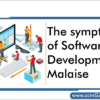
Perforce Web References & Cheatsheet
A way to remember data-mining commands The following is a set of questions that will be used during the Perforce training to remind students which “data-mining” commands to use for…
Read more »
How to run Remote Desktop Console by using command line?
How to run Remote Desktop Console using command line If you may want to run Desktop Console from a batch file, for example RDC over VPN, you can use mstsc…
Read more »
File Comparing Tools Review and Feedback
File Comparing Tools review File comparison in computing is the automatic comparing of data between files on a file system. The result of comparisons are typically displayed to the user,…
Read more »
Ant Script with Shell script, How to run shell script from Ant Script?
Ant Script with Shell script How to set files Permission in Ant | How to set files Permission in Unix | Set files Permission in Ant in Unix Environment Command:…
Read more »
Ant command line arguments – Examples – Summary
Ant command line arguments Several tasks take arguments that will be passed to another process on the command line. To make it easier to specify arguments that contain space characters,…
Read more »
VI/VIM editor Commands | VI/VIM editor commands reference | Cheat Sheet
what will happen ? “man ls |col -b > ” will give the text file same as man ls. what is VI-editor ? While in vi you can run AIX…
Read more »
CVS Configuration Procedure – Install CVS – CVS Setup Guide
CVS Configuration – Install CVS Procedure #1:- Use rpm or up2date or yum command to install cvs: for Redhat Use:- rpm -ivh cvs OR# up2date cvs for fedora use:- yum…
Read more »
Basic of Unix – Presentation | Unix Learning Reference – Guide
Basic of Unix Presentation Basic Unix from Rajesh Kumar Basic Unix View more presentations from rajeshatbuzz. (tags: basic of)
Read more »
Batch Program to Shutdown and restart the computer.
Batch Program to Shutdown and restart the computer. Restart echo off D:\Temp\tmp\SHUTDOWN.EXE /L /R /Y /C pause Shutdown echo offd:\tmp\SHUTDOWN.EXE /L /Y /C pause
Read more »
How CVS will help to Realtime Developers ?
CVS Tips & Tricks The CVS commands here assume that you are using the command line version of CVS. Tips and tricks for a specific CVS GUI are specific to…
Read more »
How to Write Trigger in Perforce? – Perforce Triggers Guide
1 Introduction Perforce introduced the first server-side trigger in release 99.1 with the pre-submit trigger. This trigger satisfied a long-standing desire in the user community, but demand continued for more…
Read more »
Makefile – Makefile example – Makefile Guide
Note that this example Makefile is from an older software project, which specifies everything within each makefile rather than using any recursive or inclusion-based makefile hierarchy, and is presented here…
Read more »
How CVS will help to Realtime Developers ?
CVS Tips & Tricks The CVS commands here assume that you are using the command line version of CVS. Tips and tricks for a specific CVS GUI are specific to…
Read more »
Apache Ant: Learn Apache Ant from IBM Experts
Apache Ant: Learn Apache Ant from IBM Experts Section 1. Getting started What is this tutorial about? In this tutorial, you’ll learn about Ant, a build tool for Java…
Read more »
AnthillPro 3.6 Released – What’s New Features in AnthillPro?
Major New Features In AnthillPro 3.6 Improved support for geographic distribution. The server-agent communication layer has been reworked for better performance. The new approach also supports the use of…
Read more »
Introduction to CVS | Know ABout CVS | Quick Start Guide
Introduction to CVS CVS is a version control system, an important component of Source Configuration Management (SCM). Using it, you can record the history of sources files, and documents. It…
Read more »
What Is Software Configuration Management, its importance & how to implement it?
Software engineers usually find coding to be the most satisfying aspect of their job. This is easy to understand because programming is a challenging, creative activity requiring extensive technical skills. It can mean getting to “play” with state-of-the-art tools, and it provides almost instant gratification in the form of immediate feedback. Programming is the development task that most readily comes to mind when the profession of software engineering is mentioned.
That said, seasoned engineers and project managers realize that programmers are part of a larger team. All of the integral tasks, such as quality assurance and verification and validation, are behind-the-scenes activities necessary to turn standalone software into a useful and usable commodity. Software configuration management (SCM) falls into this category—it can’t achieve star status, like the latest “killer app,” but it is essential to project success. The smart software project manager highly values the individuals and tools that provide this service.
This chapter will answer the following questions about software configuration management.
Read more »

The Four Basic Requirements for SCM Process – SCM Guide
Identification, control, audit, and status accounting are the four basic requirements for a software configuration management system. These requirements must be satisfied regardless of the amount of automation within the SCM process. All four may be satisfied by an SCM tool, a tool set, or a combination of automated and manual procedures.
- Identification—Each software part is labeled so that it can be identified. Furthermore, there will be different versions of the software parts as they evolve over time, so a version or revision number will be associated with the part. The key is to be able to identify any and all artifacts that compose a released configuration item. Think of this as a bill of materials for all the components in your automobile. When the manufacturer realizes that there has been a problem with parking brakes purchased from a subcontractor, it needs to know all the automobile models using that version of the parking brake. It is the same with software. If we are building a multimedia system that has audio MPEG3 drivers for Windows 98, Windows 2000, Windows CE, Linux, and FreeBSD operating systems, how do we find out which releases are impacted when we find an error in the Linux product? You must go back to your SCM system to identify all the common components in all operating system releases that are impacted.
Read more »

The symptoms of our software development malaise
Software development has traditionally suffered from producing end products with a definite lack of inherent quality. The symptoms of this quality lack are listed here:
- Software development projects are often delivered late and over budget.
- Often the delivered product does not meet customer requirements and is never used.
- Software products simply do not work right.
As we look into the symptoms of our software development malaise, five principal issues related to software development arise.
Lack of Visibility
Software is conceptual in nature. Unlike a bridge, a building, or another physical structure, it is not easy to look at software and assess how close it is to completion. Without strong project management, “software is 90% complete 90% of the time.” Through the adoption of SCM policy and the definition of the configuration management model of the software under development, all CIs, components, and subcomponents are immediately visible for versions, releases, and product families.
Read more »

What are the minimum features for SCM tools? – SCM Tools Essential Features
SCM Tools
The minimum features for SCM tools are closely related to the task of handling the different product deliverables produced within the project software engineering process. Tool requirements and selection criteria are based on a series of features that provide a consistent look and feel with state-of-the-art software development environments. An SCM tool must have multiuser support, an intuitive graphical user interface, conformity to the organization’s development environment, scalability, flexibility in integrating other software development tools, ease of setup, modifiable models, process management, extensive support for the development phase, and management of nondevelopment objects.
Basic selection criteria includes the following:
Read more »

SCM Benefits the Organization in Four Major Ways – SCM Process Benefits
SCM benefits an organization in four areas: control, management, cost savings, and quality. These four benefits are mapped to an organization’s overall goals and objectives when the decisions are made to bring a SCM tool in-house. The features of a SCM tool further support these benefits.
SCM Benefits the Organization in Four Major Ways
Control
Control in SCM provides the ability to review, approve, and incorporate changes into a configuration item. There must be one controlling SCM tool so that there is only one set of training, license management, installation, and user procedures. All project personnel use the tool. Inherent in the tool is a standardized, measurable process for change. Integrity maintenance of CIs is enforced throughout the product life cycle. The tool permits only controlled change to the baseline CIs, and all changes are tracked.
Read more »








